
Featuring an interview with Jason Fabry 2008 NEWMA AllStar from Paper Converting in Green Bay (2:26 minutes).
- Subject:
- Career and Technical Education
- Material Type:
- Other
- Author:
- NEWMA
- Date Added:
- 06/29/2022

Featuring an interview with Jason Fabry 2008 NEWMA AllStar from Paper Converting in Green Bay (2:26 minutes).
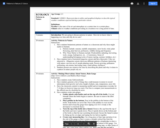
In this lesson, students will compare weather and climate, explain patterns over time and make observations by creating a rain gauge.
NGSS: 3-ESS2-1
Time: 55 minutes
Materials: laminated patterns in nature photos (photos included), thermometer for the class, duct tape, data sheet, rulers, sharpies, scissors, empty soda bottles for rain gauages, pebbles
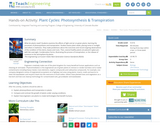
What do plants need? Students examine the effects of light and air on green plants, learning the processes of photosynthesis and transpiration. Student teams plant seeds, placing some in sunlight and others in darkness. They make predictions about the outcomes and record ongoing observations of the condition of the stems, leaves and roots. Then, several healthy plants are placed in glass jars with lids overnight. Condensation forms, illustrating the process of transpiration, or the release of moisture to the atmosphere by plants.
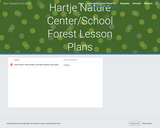
Students will compare and contrast adult plants and seedlings/young plants using pictures, journaling, growing plants in the classroom and comparing experimental plant growth with natural plant growth to learn why plants survive and where.
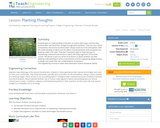
Students gain an understanding of the parts of a plant, plant types and how they produce their own food from sunlight through photosynthesis. They also learn about transpiration, the process by which plants release moisture to the atmosphere. With this understanding, students test the effects of photosynthesis and transpiration by growing a plant from seed. They learn how plants play an important part in maintaining a balanced environment in which the living organisms of the Earth survive. This lesson is part of a series of six lessons in which students use their evolving understanding of various environments and the engineering design process, to design and create their own model biodome ecosystems.
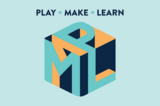
The Play Make Learn Conference is a place for collaboration and discovery in the design, research and practice of playful learning, games for learning and positive social impact, making and makerspaces, STEAM education, and arts in education. PML creates an inspirational space for preK-12 educators, designers, developers, innovators, librarians, museum professionals, makers, and researchers to tinker together, share knowledge, and celebrate one another’s work.

Featuring career information from Codey Gerarden of Gerarden Fabrication & Design.

Featuring an interview with Jacob Becker, 2018 NEWMA AllStar from Rockline Industries in Sheboygan Falls (2:39minutes).
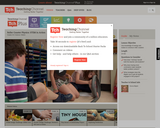
Fifth graders in Donna Migdol's class work collaboratively to create a roller coaster with the longest ride so that a marble can get to end of the roller coaster without falling off. The class begins by "chiming," talking about their design ideas and building off of each other's thoughts. After discussing their plans, students construct individual sketches of their roller coasters. The groups then come together to discuss their ideas, construct group sketches, and make computer simulations of their roller coasters. After coming up with solid plans for their roller coasters, the groups construct their roller coasters using a variety of materials, testing and redesigning as necessary.

The Science Buddies website offers a lesson plan called the “Rubber Band Car Challenge” designed for grades 6-8. In this engaging engineering activity, students build rubber band-powered cars using readily available craft supplies. The challenge is to construct a car that can travel as far as possible while being mindful of the materials used. The lesson plan includes learning objectives related to designing devices based on specific criteria, evaluating competing design solutions, and understanding concepts like kinetic and potential energy, force, and friction. Students can enter their car designs in the 2024 Science Buddies Engineering Challenge for a chance to win a cash prize for their school. The lesson aligns with Next Generation Science Standards and encourages hands-on exploration of physics concepts. The materials allowed for building the cars include items like CDs, plastic bottle caps, paper, wooden pencils, straws, and rubber bands. Teachers can find detailed instructions and guidelines on the Science Buddies website
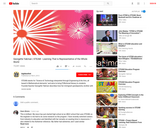
STEAM stands for "Science & Technology interpreted through Engineering & the Arts, all based in Mathematical elements," and aims to bring FUNctional literacy to students. Founder/teacher Georgette Yakman describes how her immigrant grandparents, brother with Asperger syndrome, and artistic stepfather led her to bring Arts into STEM.
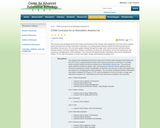
This resource was developed by the Kent Career and Technical Center through seed funding from the CAAT and is a project-based curriculum that revolves around the construction of a working electric powered vehicle that will be entered into an Electrathon America race. This curriculum guides students through the design, build, and test process with their electric powered vehicle. Curriculum experiences include a combination of classroom, lab learning, on-site work experiences, and exposure to emerging green career pathways. The curriculum developed includes mathematics and science standards for Physics, P1-P4, with an emphasis on forces and motion, energy, and electricity for grades 9-12.
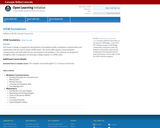
This course is design to support the development of foundational skills in workplace communication and mathematics that are used in various STEM careers. The course offers practice using workplace communication and math skills that are encountered in the workforce. The activities are designed to strengthen skills in preparation for entering a college program in a STEM career.

This course will focus on the intersection of STEM subjects and global competence and will feature a variety of resources, reflection activities, and testimonials from teachers across the United States. Global competence and global collaboration are essential to progress in the overlapping fields of science, technology, engineering, and mathematics (STEM). The interconnectedness of our world and the rise of new technologies demand that students be prepared to work across borders. To prepare for the jobs of tomorrow, students will need a set of specific skills that will enable them to fully participate, problem solve, and adapt in our changing world. The ability to engage with multiple perspectives in the pursuit of knowledge will be key to their success. Global competence in STEM requires today’s students to recognize their responsibilities to both the local and global communities and to develop and apply knowledge in culturally appropriate, relevant, and sustainable ways.
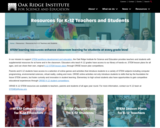
ORISE (Oak Ridge Institute for Science and Education) provides valuable STEM resources for K-12 teachers, students, and parents.
STEM Learning Resources for Teachers:
Educators teaching K-12 grades can access a library of hands-on STEM lesson plans suitable for all ages.
They can also share their own original STEM lesson plans through ORISE lesson plan competitions.
These resources enhance classroom learning and foster curiosity and innovation in student education.
Online Activities for Students and Parents:
Parents and K-12 students can explore a selection of online games and activities.
These activities introduce students to various STEM subjects, including computer programming, environmental sciences, virtual reality, and coding.
By participating in these activities, students develop skills that lay the foundation for future STEM careers.
Competitive Educational Experiences:
Elementary to high school students have opportunities to gain competitive educational experiences through ORISE K-12 student competitions.
These experiences encourage engagement and excitement in STEM learning.
STEM Career Spotlights:
ORISE highlights various STEM careers, inspiring students to explore diverse paths.
Whether you’re interested in science, technology, engineering, or mathematics, this resource provides insights into potential career trajectories.
Harnessed Atom Middle School STEM Curriculum:
Developed under a contract with the U.S. Department of Energy’s Office of Nuclear Energy, the Harnessed Atom curriculum provides non-biased information on energy science and nuclear energy.
It engages students by covering essential principles related to energy and matter.
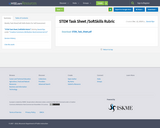
Weekly Task Sheet/Soft Skills Rubric for Self Assessment
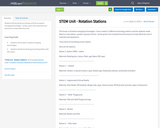
Students will be paired up in groups of three to explore emerging technologies. I wrote a grant and contacted local businesses to help offset the costs.
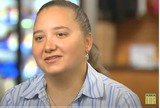
Featuring an interview with Sheila Ecker, 2014 NEWMA AllStar from Sargento (2:57minutes).
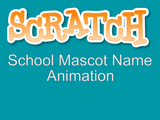
Based on the Scratch "Animate Your Name" tip tutorial, this mini-lesson has students showing their school spirit by animating their school mascot. The step-by-step instructions assume that the teacher has a little exposure to the Scratch platform.

TECH CAREERS ARE RARELY LINEAR! Hear from the voices of Adam Cobb, (Kohl's), Dana Hart (Northwestern Mutual), Kedasha Kerr, (Northwestern Mutual) and moderator Efrem Powell (Northwestern Mutual). The following videos will give you a look into the variety of tech jobs and careers available to you and how you can prepare for them. Watch one - or all - and hear from experts who are doing these jobs today. As you watch the videos, download our workbook at https://bit.ly/MKEWorksheet to help you reflect on each career path and if that might be the right one for you some day!